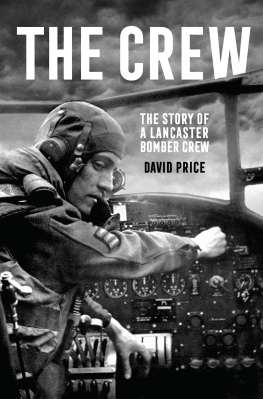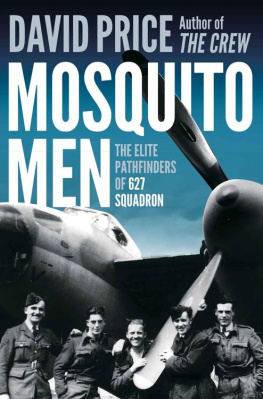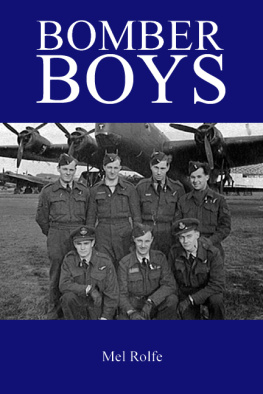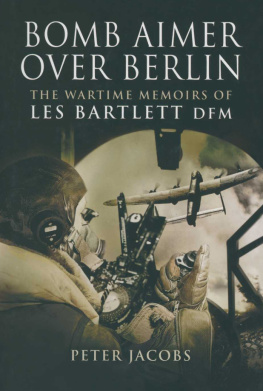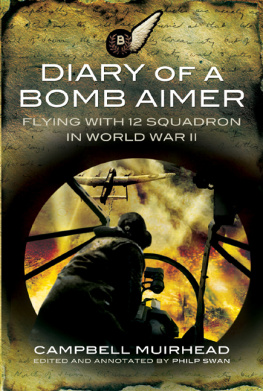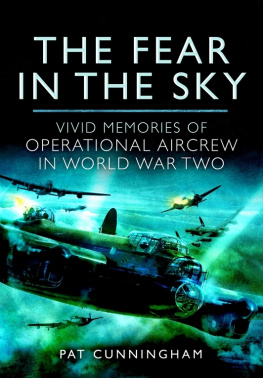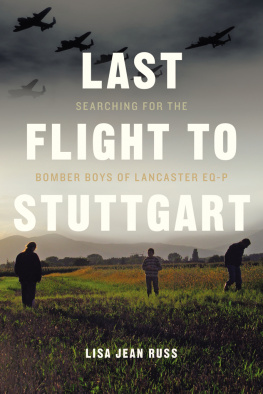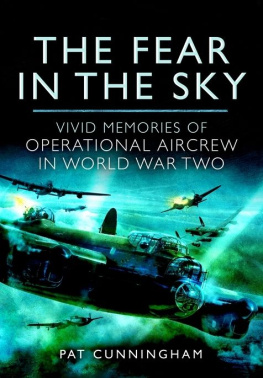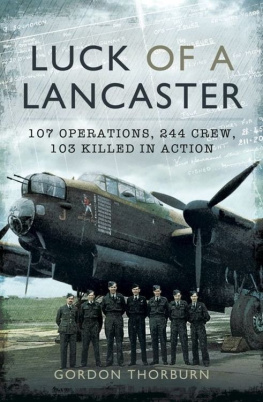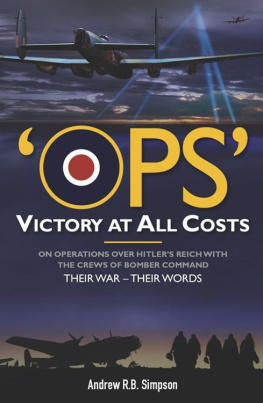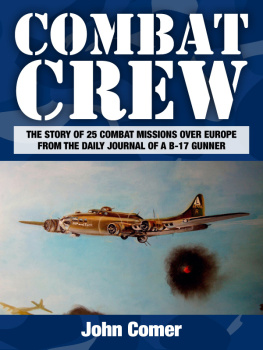THE CREW

(Apic / Getty Images)
THE CREW
THE STORY OF A LANCASTER
BOMBER CREW
DAVID PRICE
AN APOLLO BOOK
www.headofzeus.com
This is an Apollo book, first published in the UK in 2020 by Head of Zeus Ltd
Copyright David Price, 2020
The moral right of David Price to be identified as the author of this work has been asserted in accordance with the Copyright, Designs and Patents Act of 1988.
All rights reserved. No part of this publication may be reproduced, stored in a retrieval system, or transmitted in any form or by any means, electronic, mechanical, photocopying, recording, or otherwise, without the prior permission of both the copyright owner and the above publisher of this book.
A catalogue record for this book is available from the British Library.
ISBN (HB): 9781789542707
ISBN (E): 9781789542691
Maps by Jamie Whyte
Jacket design: Steve Leard
Front cover image: 15 May 1943: Sergeant John McKintosh of the RAF starts the engine of his Lancaster bomber after a painstaking check of the planes systems. Original Publication: Picture Post 1437 The Last Hour In A Lancaster pub. 1943 (Photo by Haywood Magee/Picture Post/Hulton Archive/Getty Images)
Head of Zeus Ltd
58 Hardwick Street
London EC R RG
WWW . HEADOFZEUS . COM

An Avro Lancaster heavy bomber seen from above during a Second World War bombing raid over Hamburg, Germany.
(Science & Society Picture Library / Getty Images)
To Trish, long-suffering but ever supportive


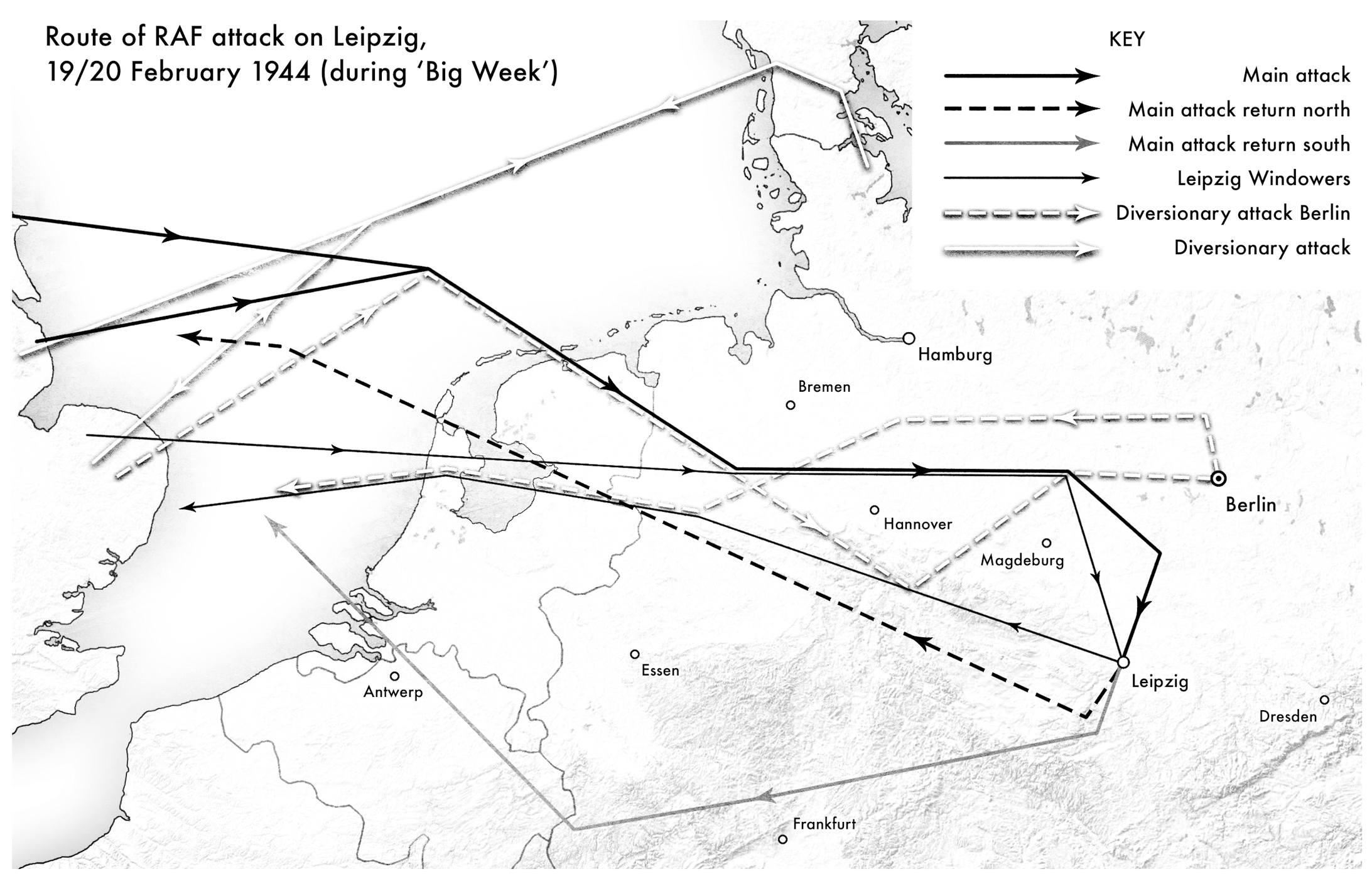
Contents
Bomber Command drew young men from all over the Commonwealth, tens of thousands of them who thrilled at the thought of flying. They were trained thoroughly and then asked to perform extraordinary technical feats while packed into a flying metal tube. They were all volunteers who exposed themselves to extraordinary dangers. The lives of these men became intertwined in the formation of a crew, each with its own characteristics and unique personality. In examining one such crew, it was my desire to represent the thousands of others who served quietly and bravely throughout the Second World War. I wished the emphasis to be not on war heroes, whose exploits placed them head and shoulders above their comrades, but, rather, on ordinary men who did extraordinary things, and who have not previously attracted the attention of historians.
The plethora of books and films about Bomber Command has tended to focus on events that easily capture the imagination. Arguably, the most famous is the The Dam Busters , a beguiling story of British technology at its most ingenious. At its heart, it contained all the elements necessary for a successful book and film. An intrepid band of airmen overcame strong German defences to achieve what had seemed impossible. They were led by Guy Gibson, a figure who fulfilled the traditional heroic role of a successful military leader. Where real-life events did not quite match up to the cinematic demands for excitement, fictitious accounts like 633 Squadron entertained the baby-boomer generation with a fast-paced storyline and stirring soundtrack.
The Crew is written at a time when we can look back on our wartime achievements with justifiable pride, but also view them through a lens of sometimes critical analysis. The Second World War was a vast and brutal conflict that has taken seventy-five years to come to terms with. The way we view and portray the men who fought in that conflict is more nuanced, and less romanticized, than it once was. We no longer require our Second World War soldiers to be Hollywood stars with perfect teeth, or stiff upper-lipped English gentlemen speaking in clipped public-school tones. Real warfare is anything but entertaining, but we can draw inspiration from those real-life individuals who passed through its extreme trials.
With any project, the formulation of an idea is often a gradual process. Some of the best stories grow from tiny seeds, almost by chance but I am not a believer in chance, preferring to look for a natural order to events. The earliest inspiration for this book came from two black and white photographs. They appeared on an American website of the USAAF 388th Bomb Group that had been based at RAF Knettishall in Suffolk during the Second World War. I had been researching the 388th for another project but, among dozens of photographs of B-17 bombers, these two caught my eye. The grainy Box Brownie pictures showed a Lancaster bomber with a collapsed port undercarriage. The squadron code by the roundel read OF-H, and with a few clicks of the mouse I found it was from 97 Squadron, Royal Air Force.
This Lancaster had been returning from a sortie to Rheine, not far from Germanys border with the Netherlands, west of Osnabrck. Although Rheine was a small town, a railway and the DortmundEms Canal both passed through it, and it had been subjected to numerous raids. The weather on 6 November 1944 had been poor and the six returning aircraft of 97 Squadron diverted to different airfields instead of their home at RAF Coningsby in Lincolnshire. According to the 97 Squadron Operational Record Book, Flying Officer J. W. Greening in Lancaster ND692 landed safely at RAF Snetterton at 9.15 that evening. However, the photograph taken the next day shows ND692 at Knettishall, seven miles away, with a wingtip firmly planted in the asphalt. Whether Greening decided to join the three other 97 Squadron Lancasters that diverted to Knettishall the next day or whether the undercarriage collapse happened on the night of the raid is unclear. Had Greening mistaken Snetterton for Knettishall when he completed his report? The incident remains one of the small mysteries that researchers love.

Lancaster ND692 of No. 7 Squadron at RAF Knettishall, Suffolk, 7 November 1944.
(Public domain)
Once I had decided to write The Crew , the initial task of finding my subjects was eased by the crashed Lancaster at Knettishall. I had approached the 97 Squadron Association for more information and now it seemed natural to seek a crew who served with them. In January 2018 I asked for suggestions for a crew on the Squadron Association Facebook page. I received many responses and I noticed some repetition in the suggestions. A number proposed the crew of Bob Lasham, but Bob, the last member, had passed away shortly before my request. Another was that of Wing Commander Ken Cook, who was the Association chairman. He had been a bomb aimer on pilot Jim Comans crew and a twenty-year-old flying officer at the time. This crew proved to be the right fit for the project and Ken provided me with first-hand accounts in a number of interviews. Although many of Kens memories have faded or become disjointed after nearly seventy-five years, his contribution towards bringing this story alive has proved invaluable.

